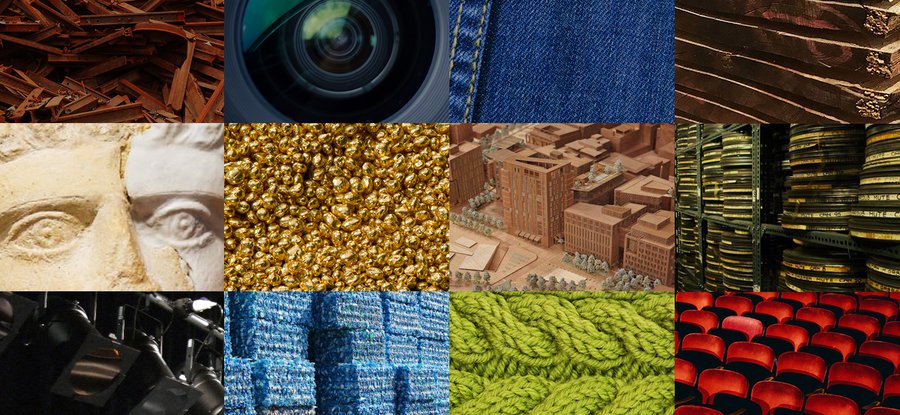Innovative Materials Shaping the Future of Product Design Trends: A Look into the rest of the year 2023

The realm of product design is undergoing a remarkable transformation, driven by the relentless pursuit of innovation. As we delve into the rest of the year 2023, it becomes evident that the materials utilized in the creation of products are playing a pivotal role in shaping design trends.
From sustainable alternatives to cutting-edge advancements, a plethora of innovative materials are poised to revolutionize the way we approach design. In this article, we’ll explore some of these groundbreaking materials that are redefining the landscape of product design trends.
1. Biodegradable Plastics: Paving the Way for Sustainability.
Sustainability has emerged as a defining factor in modern product design. Biodegradable plastics, also known as bioplastics, are at the forefront of this movement. These materials are derived from renewable sources such as corn starch, sugarcane, and algae. They offer a compelling solution to the global plastic pollution crisis by breaking down naturally over time, reducing environmental impact.
Manufacturers and designers are embracing biodegradable plastics for a wide range of applications, including packaging, consumer electronics, and even furniture. The versatility of these materials is driving a shift towards more eco-friendly and responsible design practices
2. Graphene: The Miracle Material.
In the realm of advanced materials, graphene stands out as a true marvel. Composed of a single layer of carbon atoms, this two-dimensional material boasts remarkable properties such as exceptional strength, electrical conductivity, and thermal conductivity. Graphene’s potential applications in product design are virtually limitless.
Already, we’re witnessing its incorporation into flexible displays, wearable technology, and energy storage devices. The unparalleled strength-to-weight ratio of graphene makes it an ideal candidate for creating lightweight yet durable products, setting the stage for a new era of innovative design possibilities.
3. Smart Fabrics: Where Technology Meets Textiles.
The fusion of technology and textiles has given rise to the concept of smart fabrics. These materials are engineered to respond to external stimuli, creating a seamless integration between the digital and physical worlds. Smart fabrics can change color, adjust opacity, and even generate energy through piezoelectric effects.
In the realm of fashion, smart fabrics are enabling designers to craft garments that adapt to environmental conditions or user preferences. In interior design, these fabrics are transforming spaces by providing interactive and dynamic surfaces. As the year unfolds, we can expect to see more innovative applications of smart fabrics across various industries.
4. Transparent Wood: Redefining Aesthetics and Sustainability.
Wood has been a staple material in design for centuries, prized for its natural beauty and versatility. However, the concept of transparent wood is taking this traditional material to new heights. By chemically removing lignin, the material responsible for making wood opaque, researchers have created a translucent wood that retains its strength and structure.
Transparent wood offers a unique blend of aesthetics and sustainability, making it a prime candidate for architectural applications. Imagine buildings with walls that allow natural light to filter through while maintaining structural integrity. This material exemplifies the fusion of innovation, functionality, and aesthetics that is shaping the future of design.
5. Mycelium Composites: Cultivating a Sustainable Future.
Mycelium, the root structure of fungi, has emerged as an unlikely yet highly promising material in the field of sustainable design. When combined with agricultural waste, mycelium forms a resilient and biodegradable composite that can be molded into various shapes. This versatile material has found its way into packaging, furniture, and building materials.
Mycelium composites represent a circular design approach, as they can be grown and produced with minimal environmental impact. As the world seeks alternatives to traditional manufacturing processes, mycelium-based products are carving a niche in the market and setting an example for sustainable design practices.
The year 2023 is unfolding as a period of remarkable innovation in the world of product design. As we look ahead, it’s clear that innovative materials are shaping the trajectory of design trends. From the sustainable solutions offered by biodegradable plastics and mycelium composites to the boundless potential of graphene and smart fabrics, these materials are challenging conventions and opening new avenues of creative expression.
The synergy between technology, sustainability, and aesthetics is redefining the very essence of product design. As designers and manufacturers continue to explore the possibilities presented by these innovative materials, we can anticipate a future where products are not only functional but also environmentally responsible and visually captivating.
The rest of the year 2023 promises to be an exciting journey of discovery and transformation, where the fusion of materials and design paves the way for a brighter and more sustainable future.

Ready to Plan For Your Successful Launch?
For A Diagnostic Evaluation For Your Project Success.
What makes a product a success

